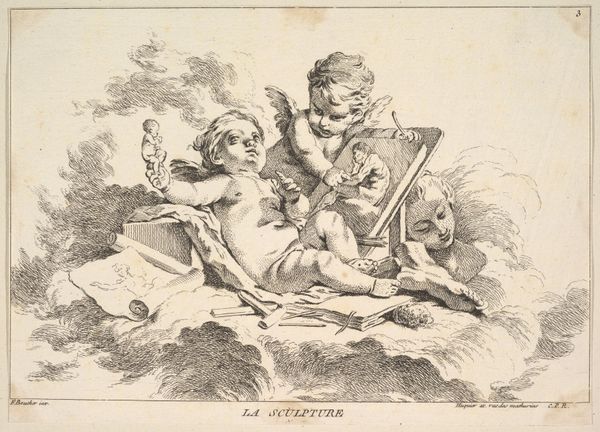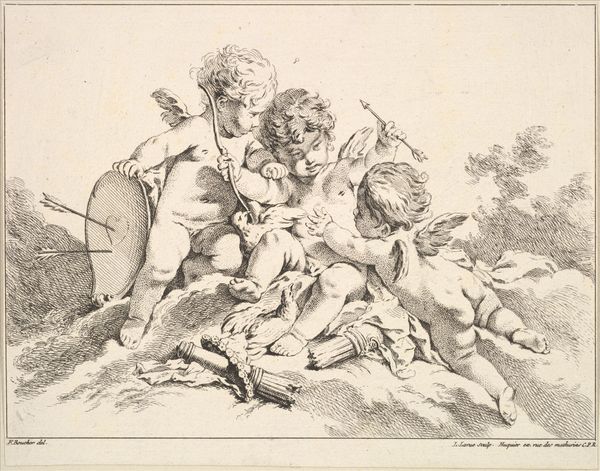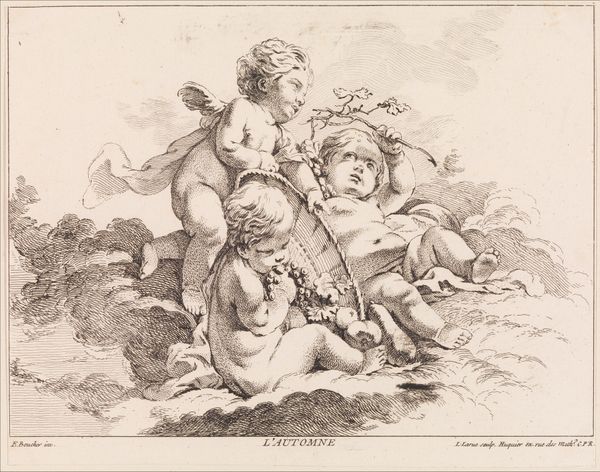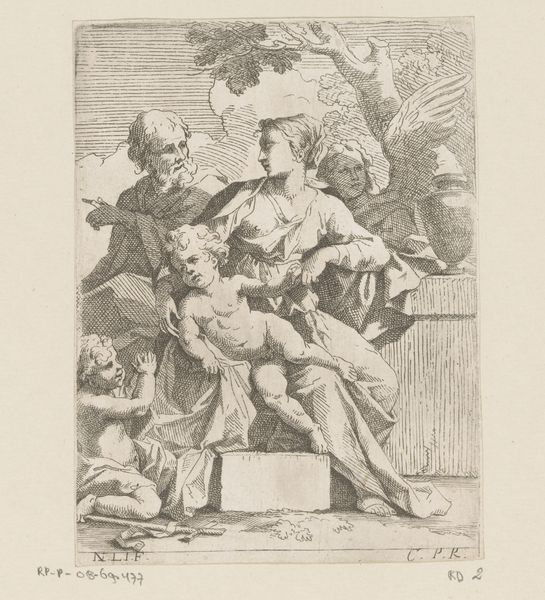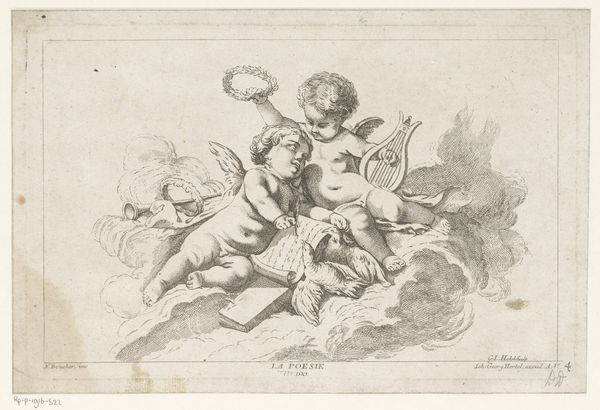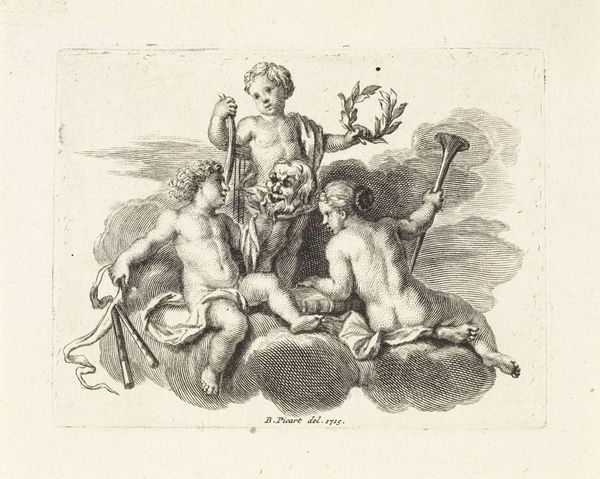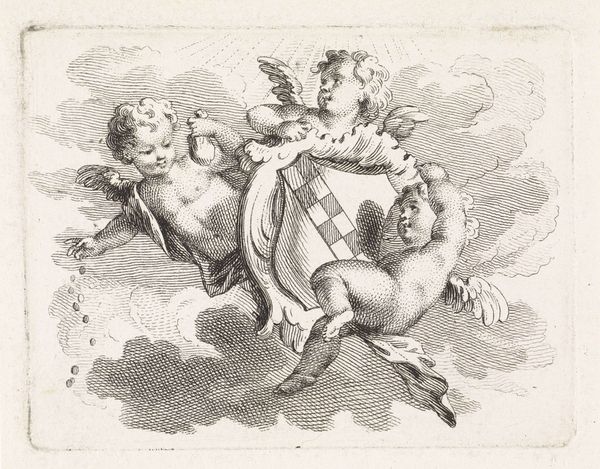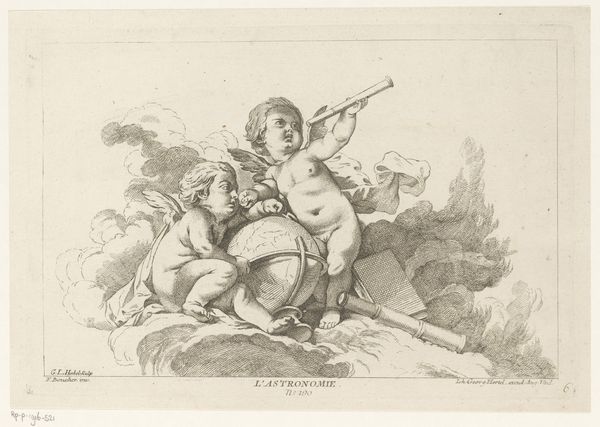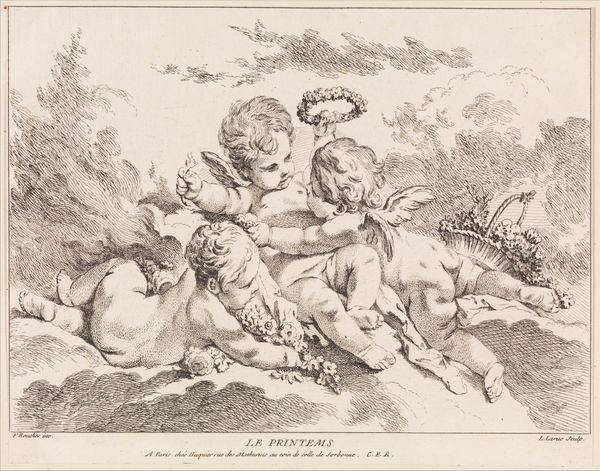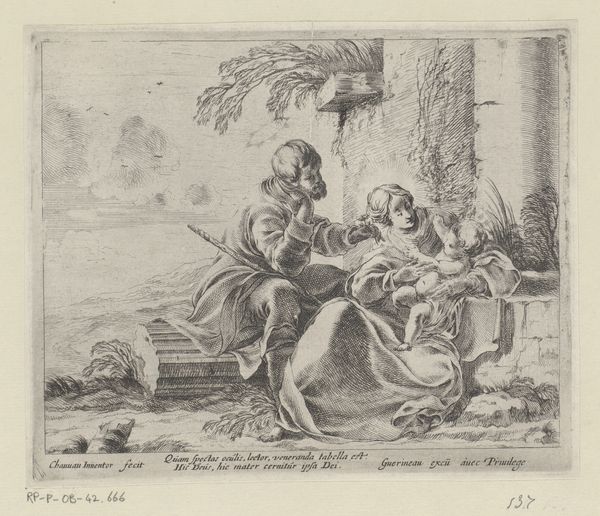
engraving
#
allegory
#
figuration
#
genre-painting
#
nude
#
engraving
#
rococo
Dimensions: height 201 mm, width 298 mm
Copyright: Rijks Museum: Open Domain
Georg Leopold Hertel created this print, titled "Beeldhouwkunst," sometime in the 18th century. It is made from etching. This allegorical scene presents cherubic figures amidst the tools and symbols of sculpture, reflecting the Rococo period’s fascination with playful and ornate aesthetics. Hertel positions the art of sculpture itself as youthful, innocent, and divinely inspired. The classical bust, drawing, and sculptor’s tools surrounding the cherubs suggest a lineage of artistic practice, rooted in history and tradition. Yet, we might consider the role of cherubs in art history – often used to soften or idealize religious and mythological narratives. Hertel’s choice to depict sculpture through these figures speaks to the cultural values placed on innocence and purity, while perhaps masking the complex labor and intellectual rigor involved in artistic creation. This image serves as a reminder of how art both reflects and shapes societal values, inviting us to consider whose perspectives are centered and whose are obscured in the narratives we inherit.
Comments
No comments
Be the first to comment and join the conversation on the ultimate creative platform.

